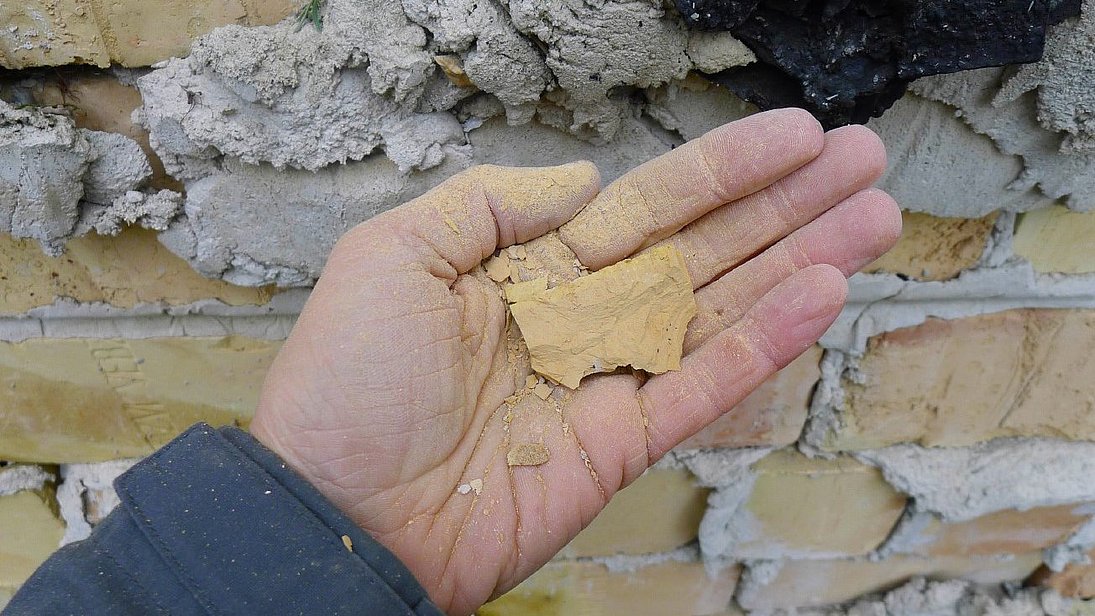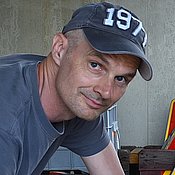
Stefan Shankland lets stones speak
Stefan Shankland, alongside four other artists, will install a permanent multicomponent sculpture within the Spreepark. Previously, he spent a year in the park as a research artist in residence. Throughout the Spreepark, art is not added as an afterthought, once all the structural decisions have been made. Art is tightly integrated into every aspect of the planning, setting its own impulses and contributing to the overall design.
The blind spot
Stefan Shankland has dedicated his work and research to a blind spot in the surveying of the site. While the flora and fauna of the Spreepark have been well documented and the settled species have all been identified and protected, one element had been overlooked until now: the mineral agents. What sounds strange at first is actually quite simple. It's about what happens to the building materials and rocks that are no longer needed once the park has been transformed. Specifically, how is the legacy of these materials and the stories they hold to be dealt with? In tearing something down, it doesn't disappear.
The matter remains. Shankland refers to this as "negative mass". Mass that one would like to get rid of in most cases and make invisible as soon as possible. It is important to acknowledge that nothing can be undone. Including the construction of a building, regardless of whether it is torn down again. Stefan Shankland considers and investigates how this waste, otherwise worthless matter, can be rendered useful once again. In doing so, he ensures that the history and heritage that dwell within it are not forgotten.
"I came to the Spreepark to establish an inventory of demolition material with a view to save some of this waste to be, before it gets taken away by the demolition firms."
Stefan Shankland
Transformationen
Shankland's work has always been connected to situations of change and transition. " The Spreepark is a site in the process of transformation, and simultaneously reshaping artistic production - as an artist, you are a part of the world," he says. In this process, he asks himself: how do I feel the change here? What can I see of relevance? And how does my artistic practice fit in with this place? These are Shankland's initial questions in gathering a sense of place and all that is possible there.
The various layers that emerge over the years, decades and millennia tell us something about ourselves as human beings and as a society. We create increasing amounts of garbage. Waste. Negative matter. But now more than ever, we are becoming aware of the fact that this waste will not disappear. In fact, in the case of nuclear waste, it must be stored and left behind for many generations to come as we continue to explore how to effectively destroy this kind of waste or reuse it. Construction waste is not quite as dramatic as nuclear energy but is still expensive and Co2-intensive. Typically, the disposal of construction waste is what drives the cost of demolishing buildings.
In his work, Shankland treats material that would otherwise be considered useless as a valuable resource. A valuable substance that tells a story and from which something new can be created. Just as the park is being transformed in its entirety, he is transforming the material. Everything remains in place - it just takes on new form.
A structured process
The transformation of the park adheres to a structured process. First, the respective building or flooring is demolished, the waste is left on-site rather than removed, and is then transformed into an artistic work. A sculptor by trade, it is natural for Shankland to create sculptures from the newly acquired material. As is the case in the Spreepark, he often works with floor sculptures, representing a translation from formerly vertical to horizontal architecture.
"It's not raw material, it's not cultural heritage, it's not a physical reminder of an architecture that once existed. It's just material that costs money to dispose of. There is no cultural value or aesthetic value on the site. Everything about that kind of material is wrong to begin with. That's what interests me," Shankland says. How we deal with this material is not only a technical question but also, and above all, a cultural one. Especially today, when the climate catastrophe is in full swing, we have to ask ourselves how to handle the waste of our civilization.
Shankland's research residence in Spreepark can be understood as an artistic survey resulting in a mapping of the mineral resources. Based on the results he developed the idea for the multi-part sculptural work in the park, which is now being realized as an integral part of the open space design.
A 100 Ton Artwork
Shankland is transforming 100 tons of mineral demolition material generated during the redevelopment of the Spreepark into 100 tons of art. He draws inspiration from the shape of the diamond, the most expensive stone on earth, for some of the sculptural elements. Thus, the material, that typically is disposed of, is pressed into a precious desirable form. " You may end up walking on it, sitting on it, looking at it, or ignoring it" he explains of his artwork. A work of art that will be almost Co2 neutral because the material will not have to travel to reach its destination. Even after the transformation of the park, after the buildings and pavements and what remains from the remodeling and demolition have been sculpted into a diamond, the material will still tell of what once was. As witnesses, as living history.



